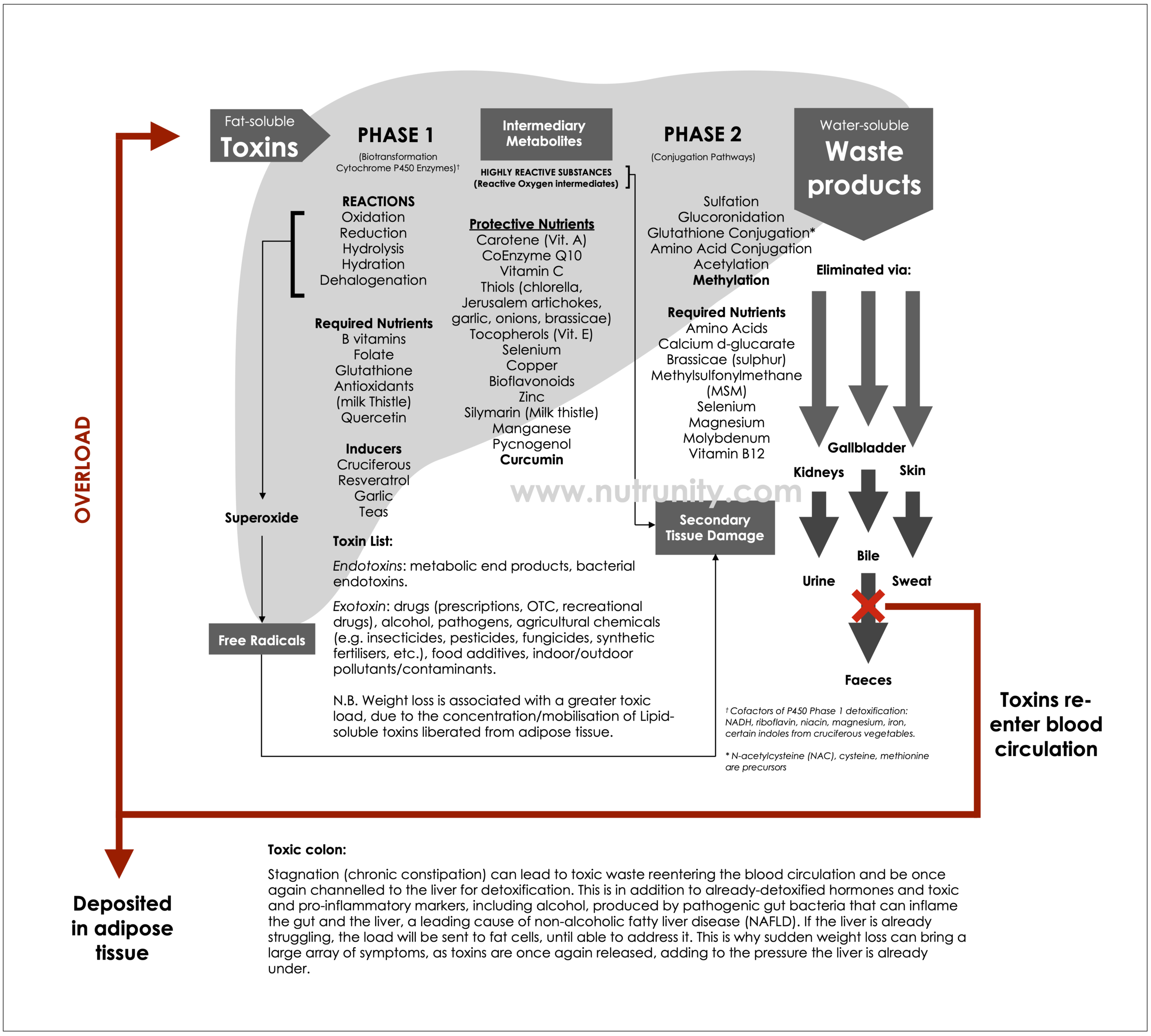Liver Detoxification and Constipation
It is well-known that stagnation — constipation — is a grave health concern. When some people have bowel movements after each meal, others go to the toilets once or twice a week.
The excessive and chronic retention of waste has a cost. The colon may become a toxic ground, and the liver is the organ that pays the highest cost, having to detoxify the same compounds, over and over again.
Chronic constipation and the distribution of toxins originating from a toxic colon.
One of the key factors behind oestrogen-dominance syndrome is an increase in oestrogens in circulation. The channel of elimination for oestrogens that are no longer required is the bowel. This means that a toxic colon can result in oestrogens finding their way back into the circulation and disturb the very fragile hormonal balance. Considering that endocrine glands are minuscule and the widespread effect of hormones, it is clear that a minute amount of oestrogens reentering the bloodstream is a considerable health problem.
A disturbed gut microbiota also participates to the problem by producing pro-inflammatory markers, alcohol and histamine. These compounds fuel inflammatory pathways in the gut but also the liver — and to some extent the brain. Histamine, in particular, is neuroexcitatory and so can contribute to sleep disorders and poorer cognitive abilities, and in the long-term, neurodegeneration (e.g., dementia and Alzheimer’s). Chronic lack of sleep makes it more difficult to maintain blood sugar levels, and so can lead to fatigue, anxiety and depression, and fuel the stress responses — placing extra pressure on all body’s systems, particularly the immune and digestive system. This, complete a vicious circle with gut inflammation and dysbiosis as triggers, perpetuators and end-results.
The overwhelming levels of toxic materials in the circulation encumbers the liver system, which unable to keep up with the demands, channels those health-wrecking molecules to the adipose tissue where they can be safely stored until the liver is once again able to detoxify them.
Due to the effect of the stress response, the adipose tissue becomes a source of oestrogen — visceral fat accumulation is the shortest route for the liver to access energy to fight or flight. The body senses danger is imminent due to the chronically activated stress response but the energy is not used as various sources of stress cannot be differentiated by the body. Stress is stress and the physiological responses are the same in all cases, even the stress we create (anxiety or anticipatory stress, or when reliving a past-traumatic experience).
Supporting the liver
Allowing for the liver to detoxify efficiently, liver-supporting foods like bitters, radishes, fennel and artichokes must be incorporated in the diet daily. Fibre-rich plant-based foods should be on your plate with every main meals, and these must include dark green vegetables like kale, broccoli, and cabbages (these are also essential for liver detoxification).
If you don’t like vegetables, then it is the time to try. A diet missing fibre and vegetables can lead to deficiencies and so, can lead to malnutrition and the body missing on the building blocks it requires for healing and repair processes, but also for cellular and liver detoxification, and co-factors desperately needed for antioxidant enzyme pathways that are essential to prevent free radical damage and keep inflammatory responses in check.
Use fresh vegetables, or as processed as little as possible. Avoid additives and preservatives laden manufactured food products as those often toxic compounds can inflame the gut and the liver.
Steam your vegetables for maximum taste and texture. Overcooked vegetables often have lost their essential nutrients and may taste ‘bad’, especially green vegetables. This may explain why you don’t like vegetables.
For things to move, you must also move. Stagnation in the body (and the mind) is the direct result of a sedentary lifestyle.
If you haven’t exercised in a while, then start by taking long walks and increase the frequency and pace until you can feel better for it. The aim is to raise your blood pressure and heart rate, and sweating (essential for detoxification). You should, however, be able to catch your breath.
Hydration is also a problem for many people. A multitude of people do not have efficient thirst mechanisms and may drink when they are severely dehydrated. Aim to drink 2 litres of water a day (or more). The colon is the organ when water resorption occurs, so the longer waste remains in the colon the more water is reabsorbed and the more compacted the stools, which now may be difficult to pass.
Looking to support your liver and reduce the impact of a toxic colon?

